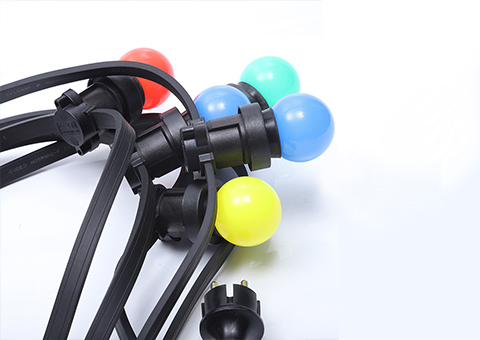The cables we usually use in our lives generally have a […]
The cables we usually use in our lives generally have a high temperature resistance of about 65 degrees, but many projects will use heat-resistant cables because of the construction needs. Today I will briefly introduce this special function cable to everyone.
(1) Heat-resistant wire and cable
The heat-resistant wire and cable is insulated and sheathed. The body resin has heat-resistant functions. The main varieties are: polyurethane (up to 155℃), polyurethane (up to 135℃), and polyvinylidene fluoride (150℃) ) And nylon (up to 115 ℃) insulation or sheath information. Commonly used in industries such as communications, cars, motors, and construction.
(2) The general cable materials are modified by various methods to achieve heat resistance:
1. Heat-resistant modification of rubber materials
Because of the poor heat resistance of rubber materials, the margin for improving the working temperature is small. Generally, the rubber is filled with more thermal stabilizers and cross-linking treatment to reach 90 ℃, so it can not be called heat-resistant cable, such as styrene-butadiene rubber, Neoprene, chlorosulfonated polyethylene, etc. Mainly used in rubber insulated mobile flexible wires, rubber insulated soft power cables and control cables.

However, EPDM rubber can be modified to improve the temperature resistance to 135 ℃, plus it has better insulation function, so it has better development prospects in rubber.
2. Modification of PVC cables
The working temperature of general PVC cables is 70℃. The high miscibility of PVC cable materials makes it possible to modify. The application of a large amount of heat stabilizers can increase the heat resistance of PVC from 70℃ to 90. ℃ or 105 ℃, which greatly expands the applicability of the old-fashioned materials such as PVC. Perhaps this is one of the reasons for the longevity of PVC cables? 90℃ PVC cable material is commonly used in XLPE cable sheath, mainly used in power, control and electrical equipment cables. Because of the modification of PVC, the use of PVC cable material that can be eliminated will continue in the sheath. Quite a long time.
The main component of polyvinyl chloride butyronitrile compound is PVC, so it has the same modification function as PVC butyronitrile compound cable and PVC insulated cable.
3. Modification of polyethylene cables
The plasticity of polyethylene materials is better, but the fillability is poor, so it is impossible to fill the heating stabilizer method to improve the heat resistance temperature. Polyethylene cables can improve the working temperature to 90°C by DCP dry chemical crosslinking and silane warm water crosslinking. The former is used for medium and high voltage power cables, and the latter is used for low voltage cables.
But another cross-linking method-irradiation cross-linking modification, can greatly improve the working temperature of polyolefin (mainly polyethylene), the irradiated insulating material can be different according to the conditions, and the temperature resistance can reach 105 ℃, 125 ℃, 135 ℃, 150 ℃, abroad can improve to 180 ℃. Mainly through the conversion of high-energy electrons into stable bond energy, its molecular structure is strengthened for thermal stability. At the same time, it is equipped with an appropriate thermal stabilizer. According to the energy level and the effectiveness of the thermal stabilizer, it is divided into different heat resistance levels.
The commonly used processing equipment in the irradiation cross-linking industry is an electron accelerator, which is to increase the energy of the electron beam high pressure to achieve the purpose of cross-linking polyolefin materials. The energy level of the common accelerator for electricity processing is 1.0 ~ 3MeV. Irradiation cross-linking can also cross-link rubber, PVC and fluoroplastics.
Irradiation cross-linked polyolefin wires and cables are mainly used for heat-resistant construction wires, car wires, aviation wires, locomotive wire wires, and electrical and electrical lead wires.
The heat-resistant cable is a medium-temperature cable with certain heat resistance and can adapt to a certain temperature environment. The most widely used is that in the power transmission cable, while ensuring the insulation function, it is of great significance to increase the current carrying capacity of the cable and reduce the weight and cross section of the cable.